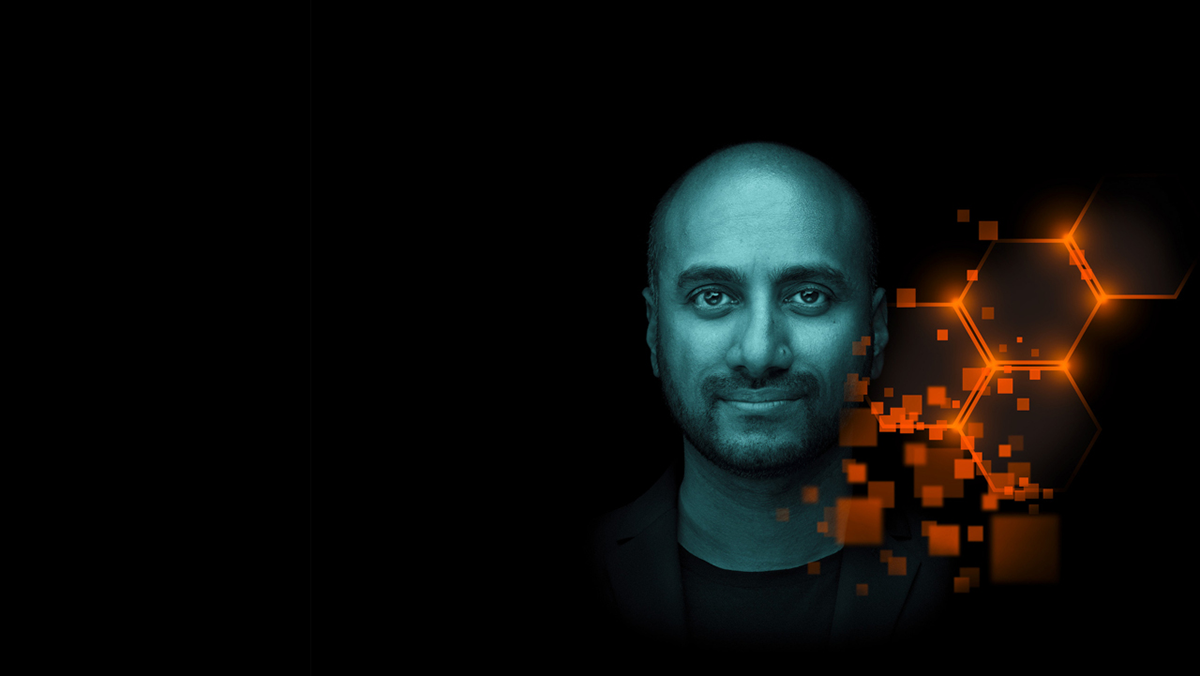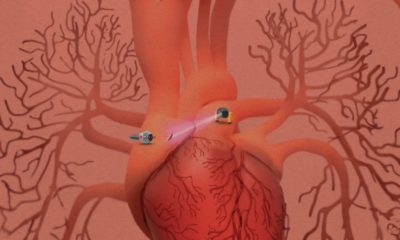Tech
Driving digital transformation for medical tech companies
Published
3 years agoon
By
Drew Simpson
Medical technology and pharmaceutical companies are transitioning beyond biopharmaceuticals, medical devices, and equipment to provide comprehensive patient care. The key is to support proactive, predictive, and personalized care delivery and management that is sustainable. This involves enabling better outcomes, improving patient and clinician experience in care pathways, reducing health-care costs, removing inefficiencies in workflows, and maximizing the convergence of capabilities.
In a bid for relevance and differentiation, many medical technology and pharma companies have embraced digitization. Digitization is now seen as an enabler of this transition as health-care companies strive to enhance value for their customers and partners.
With the availability of digital tools and technologies, the industry aims to accelerate the use of health-care data for process improvement, product development, and value proposition enhancement while looking at new monetization models.
Succeeding with digital transformation
Medical technology companies have always had to choose where to invest their research-and-development resources: on prioritizing developing their core competencies and solutions or on digital infrastructure and analytical capabilities. Although both are essential, not all firms have the funds to do both or the skill sets to develop capabilities in data management or analysis algorithms, or the partner ecosystem to leverage, collaborate, co-create, and share risk. Furthermore, these firms may not have experience in setting up governance and compliance structures to use clinical data in compliance with regulations.
Specific internal capabilities, as well as planning and resources are required to develop and maintain a digital ecosystem to realize the multiple benefits of data, analytics, and collaboration with appropriate partners. Platforms offer a cloud-based ecosystem for secure access and data sharing among multiple stakeholders, enabled by digital tools and applications while providing an avenue for like-minded firms to collaborate.
In this way, platform as a service (PaaS) allows users to leverage a subscription-based data and cloud computing service without the complexity of building and maintaining the infrastructure. It allows users to access, develop, and run applications, and unify digital transformation using a single platform, reducing the use of resources needed to drive transformation.
“Data is in silos, and to optimize clinical pathways, all stakeholders need to work together by co-creating and co-opeting,” says Max Milz, senior partner and senior vice president at Siemens Advanta Consulting. “In other words, data needs to be accessed, processed, stored, analyzed, and shared in a secure and compliant manner for it to be useful to different stakeholders. PaaS is one of the enablers for driving this integration. Medical technology companies can accelerate their digital transformation efforts by leveraging first-mile connectivity to a hospital ecosystem and last-mile access to data offered by the teamplay digital health platform.”
Medical technology needs a specific platform
Most health-care data management use cases are industry-specific with requirements to access imaging, pathology, and clinical data. Stakeholders considering a platform would benefit from collaborating with one that has domain specificity and is incubated and managed by another experienced medical technology organization.
A platform specific to medical technology offers vertical domain expertise from a market access and connectivity perspective, access to relevant data, specific applications for that sector, and experience of the security and regulatory compliance requirements, allowing partners to focus on the development of their core solutions and value propositions. Using a medical technology PaaS offers medical equipment and device companies the flexibility to adapt continuously to evolving market needs, optimizing investment in time and resources while being guided by a valued partner with experience of developing a platform fit for purpose.
In a competitive market, medical technology companies must focus on accelerated product development while partnering with the best PaaS provider to help realize their overall digital transformation goals.
“The majority of medical technology companies have a strong product presence,” explains Thomas Friese, senior vice president for digital platforms at Siemens Healthineers. “However, what they also need is to transform to a sustainable service model.”
And there’s no need to go it alone. “Co-opetition is gathering prominence in medical technology and pharma, and all stakeholders stand to only benefit from integration. PaaS will become very relevant in this context, thus positioning teamplay digital health platform uniquely, with its domain-specific expertise and digital transformation capabilities,” Friese says.
A proven and compliant PaaS platform: teamplay
A company with extensive experience in imaging and diagnostics can build a platform that brings together a strong diagnostic and therapeutic core and specialized digital offerings, and systematically expand it across multiple functionalities.
Several use cases can be used as templates for technology advancement, enabling partners to achieve their objectives. teamplay acts as a technology accelerator for medical technology companies, providing first-mile connectivity and last-mile access.
As a medical technology-specific platform provider, Siemens Healthineers offers vertical domain expertise and industry expertise, differentiating it from horizontal platform capabilities offered by leading IT companies. The subscription model also allows users to spread the investment over time and generate higher returns by giving partners a head start. Overall, Siemens Healthineers has a clear vision of where it fits with partners by increasing fidelity and ease of use while decreasing time and effort for its partners.
Partnering offers advantages for digital transformation
The advantages of partnering in creating a PaaS are evident: it is a more strategic and long-term option with the opportunity to collaborate, co-create, and share risk. Compared with building a platform, partnering provides scalability by optimizing time, resources, and investment. While building a platform with a public cloud services provider, medical technology companies are still required to network with hospitals for data access and arrange integration with devices and the health-care IT ecosystem.
Partnering with a medical technology PaaS, however, offers scalability in terms of access and connectivity and the ability for the platform to evolve by onboarding new products, applications, and vendors.
Medical technology companies must choose a partner whose vision, breadth, and service align with overall digital transformation efforts. Partnering with Siemens Healthineers enables access to a tried and tested platform that is compliant, secure, and acts as a technology accelerator. It further offers the potential to focus on core competencies while collaborating to explore new and adjacent opportunities.
The teamplay digital health platform connects and integrates data from various sources across departments and institutions on a vendor-, system- and device-neutral platform. It offers scalable deployment models with hybrid computing, combining cloud and on-edge deployment to serve specific use cases. Access is also open to innovations and solutions in AI and digital health from Siemens Healthineers and its curated partner network with opportunities for collaboration with peers and partners that enables risk-sharing models. It allows the deployment and operation of applications and algorithms globally by leveraging the secure platform infrastructure.
Most important, with Siemens Healthineers, medical technology companies have the opportunity to partner with a platform that is continuously being developed and delivers clinical credibility and business relevance.
Learn more about PaaS technology in health care.
This content was produced by Insights, the custom content arm of MIT Technology Review. It was not written by MIT Technology Review’s editorial staff.
You may like
-


Yahoo’s decades-long China controversy and the responsibility of tech companies
-


Medical microrobots that can travel inside your body are (still) on their way
-


Chinese apps are letting public juries settle customer disputes
-


Make no mistake—AI is owned by Big Tech
-


Climate tech is back—and this time, it can’t afford to fail
-


Why the UN climate talks are a moment of reckoning for oil and gas companies
Tech
The hunter-gatherer groups at the heart of a microbiome gold rush
Published
4 months agoon
12/19/2023By
Drew Simpson
The first step to finding out is to catalogue what microbes we might have lost. To get as close to ancient microbiomes as possible, microbiologists have begun studying multiple Indigenous groups. Two have received the most attention: the Yanomami of the Amazon rainforest and the Hadza, in northern Tanzania.
Researchers have made some startling discoveries already. A study by Sonnenburg and his colleagues, published in July, found that the gut microbiomes of the Hadza appear to include bugs that aren’t seen elsewhere—around 20% of the microbe genomes identified had not been recorded in a global catalogue of over 200,000 such genomes. The researchers found 8.4 million protein families in the guts of the 167 Hadza people they studied. Over half of them had not previously been identified in the human gut.
Plenty of other studies published in the last decade or so have helped build a picture of how the diets and lifestyles of hunter-gatherer societies influence the microbiome, and scientists have speculated on what this means for those living in more industrialized societies. But these revelations have come at a price.
A changing way of life
The Hadza people hunt wild animals and forage for fruit and honey. “We still live the ancient way of life, with arrows and old knives,” says Mangola, who works with the Olanakwe Community Fund to support education and economic projects for the Hadza. Hunters seek out food in the bush, which might include baboons, vervet monkeys, guinea fowl, kudu, porcupines, or dik-dik. Gatherers collect fruits, vegetables, and honey.
Mangola, who has met with multiple scientists over the years and participated in many research projects, has witnessed firsthand the impact of such research on his community. Much of it has been positive. But not all researchers act thoughtfully and ethically, he says, and some have exploited or harmed the community.
One enduring problem, says Mangola, is that scientists have tended to come and study the Hadza without properly explaining their research or their results. They arrive from Europe or the US, accompanied by guides, and collect feces, blood, hair, and other biological samples. Often, the people giving up these samples don’t know what they will be used for, says Mangola. Scientists get their results and publish them without returning to share them. “You tell the world [what you’ve discovered]—why can’t you come back to Tanzania to tell the Hadza?” asks Mangola. “It would bring meaning and excitement to the community,” he says.
Some scientists have talked about the Hadza as if they were living fossils, says Alyssa Crittenden, a nutritional anthropologist and biologist at the University of Nevada in Las Vegas, who has been studying and working with the Hadza for the last two decades.
The Hadza have been described as being “locked in time,” she adds, but characterizations like that don’t reflect reality. She has made many trips to Tanzania and seen for herself how life has changed. Tourists flock to the region. Roads have been built. Charities have helped the Hadza secure land rights. Mangola went abroad for his education: he has a law degree and a master’s from the Indigenous Peoples Law and Policy program at the University of Arizona.
Tech
The Download: a microbiome gold rush, and Eric Schmidt’s election misinformation plan
Published
4 months agoon
12/18/2023By
Drew Simpson
Over the last couple of decades, scientists have come to realize just how important the microbes that crawl all over us are to our health. But some believe our microbiomes are in crisis—casualties of an increasingly sanitized way of life. Disturbances in the collections of microbes we host have been associated with a whole host of diseases, ranging from arthritis to Alzheimer’s.
Some might not be completely gone, though. Scientists believe many might still be hiding inside the intestines of people who don’t live in the polluted, processed environment that most of the rest of us share. They’ve been studying the feces of people like the Yanomami, an Indigenous group in the Amazon, who appear to still have some of the microbes that other people have lost.
But there is a major catch: we don’t know whether those in hunter-gatherer societies really do have “healthier” microbiomes—and if they do, whether the benefits could be shared with others. At the same time, members of the communities being studied are concerned about the risk of what’s called biopiracy—taking natural resources from poorer countries for the benefit of wealthier ones. Read the full story.
—Jessica Hamzelou
Eric Schmidt has a 6-point plan for fighting election misinformation
—by Eric Schmidt, formerly the CEO of Google, and current cofounder of philanthropic initiative Schmidt Futures
The coming year will be one of seismic political shifts. Over 4 billion people will head to the polls in countries including the United States, Taiwan, India, and Indonesia, making 2024 the biggest election year in history.
Tech
Navigating a shifting customer-engagement landscape with generative AI
Published
4 months agoon
12/18/2023By
Drew Simpson
A strategic imperative
Generative AI’s ability to harness customer data in a highly sophisticated manner means enterprises are accelerating plans to invest in and leverage the technology’s capabilities. In a study titled “The Future of Enterprise Data & AI,” Corinium Intelligence and WNS Triange surveyed 100 global C-suite leaders and decision-makers specializing in AI, analytics, and data. Seventy-six percent of the respondents said that their organizations are already using or planning to use generative AI.
According to McKinsey, while generative AI will affect most business functions, “four of them will likely account for 75% of the total annual value it can deliver.” Among these are marketing and sales and customer operations. Yet, despite the technology’s benefits, many leaders are unsure about the right approach to take and mindful of the risks associated with large investments.
Mapping out a generative AI pathway
One of the first challenges organizations need to overcome is senior leadership alignment. “You need the necessary strategy; you need the ability to have the necessary buy-in of people,” says Ayer. “You need to make sure that you’ve got the right use case and business case for each one of them.” In other words, a clearly defined roadmap and precise business objectives are as crucial as understanding whether a process is amenable to the use of generative AI.
The implementation of a generative AI strategy can take time. According to Ayer, business leaders should maintain a realistic perspective on the duration required for formulating a strategy, conduct necessary training across various teams and functions, and identify the areas of value addition. And for any generative AI deployment to work seamlessly, the right data ecosystems must be in place.
Ayer cites WNS Triange’s collaboration with an insurer to create a claims process by leveraging generative AI. Thanks to the new technology, the insurer can immediately assess the severity of a vehicle’s damage from an accident and make a claims recommendation based on the unstructured data provided by the client. “Because this can be immediately assessed by a surveyor and they can reach a recommendation quickly, this instantly improves the insurer’s ability to satisfy their policyholders and reduce the claims processing time,” Ayer explains.
All that, however, would not be possible without data on past claims history, repair costs, transaction data, and other necessary data sets to extract clear value from generative AI analysis. “Be very clear about data sufficiency. Don’t jump into a program where eventually you realize you don’t have the necessary data,” Ayer says.
The benefits of third-party experience
Enterprises are increasingly aware that they must embrace generative AI, but knowing where to begin is another thing. “You start off wanting to make sure you don’t repeat mistakes other people have made,” says Ayer. An external provider can help organizations avoid those mistakes and leverage best practices and frameworks for testing and defining explainability and benchmarks for return on investment (ROI).
Using pre-built solutions by external partners can expedite time to market and increase a generative AI program’s value. These solutions can harness pre-built industry-specific generative AI platforms to accelerate deployment. “Generative AI programs can be extremely complicated,” Ayer points out. “There are a lot of infrastructure requirements, touch points with customers, and internal regulations. Organizations will also have to consider using pre-built solutions to accelerate speed to value. Third-party service providers bring the expertise of having an integrated approach to all these elements.”
